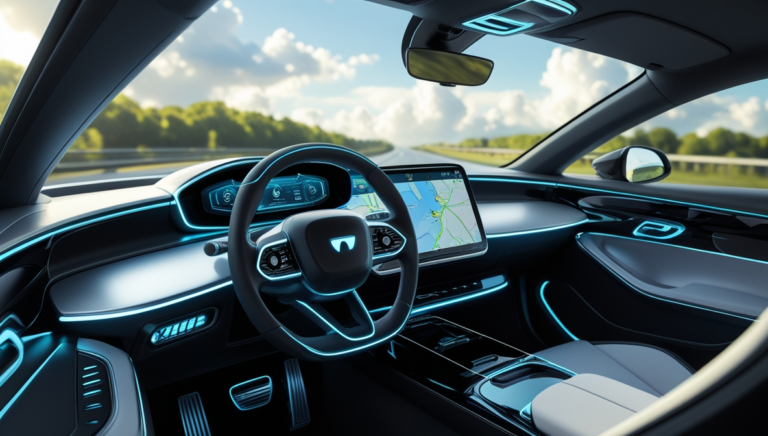Radar as the Foundation of Automotive Safety and Level 4 Autonomy
Radar is the cornerstone of automotive safety and critically important for achieving the new level 4 autonomy. While today over 50% of new cars are equipped with one or more radars, by 2042, all new vehicles will have multiple radars, as they will become a key element of future mobility modes.
Automotive radar significantly enhances safety
Currently, front radars are important for the operation of key driver assistance systems (ADAS) such as automatic emergency braking and adaptive cruise control. Radar is the best sensing solution because it accurately measures the distance and speed of objects and remains effective in darkness, poor weather conditions, and fog.
Active safety functions have already proven their effectiveness, reducing rear-end collisions by 45% (according to the European Road Safety Council). These benefits have led regulators, such as Euro NCAP, to require the mandatory installation of automatic emergency braking on all new cars. In its "Automotive Radar 2022–2042" study, IDTechEx reviewed these regulatory initiatives and forecasts significant growth in radar usage.
Radar sensor performance has significantly improved over the past decade. Products from tier 1 suppliers like Bosch, Continental, and Denso are now orders of magnitude more effective than 5–10 years ago. One of the key factors for future performance increases is the transition from SiGe BiCMOS-based transceivers to Si-CMOS technology.
IDTechEx conducted primary research by interviewing eight startups and five tier 1 and 2 suppliers. Startups like Uhnder and Arbe are using Si-CMOS-based solutions to push radar performance to new, previously unreachable levels. The angular resolution of these radars reaches 0.5°–1°, which is beginning to approach the characteristics of LiDAR, which typically has angular resolution of 0.05°–0.5°. It can be fairly stated that modern radars are nearly on par with LiDAR in terms of quality.
Autonomy as a driver of long-term radar demand
Another driver for the growth in radar demand will be the arrival of vehicles with higher levels of autonomy. Level 3 cars have already appeared on the roads in Japan and are expected in Europe starting in 2022. Vehicles at level 3 and above are expected to be equipped with at least five radars, each requiring higher performance than before.
Increased safety, the demand for higher levels of autonomy, and performance growth will contribute to the widespread adoption of radar systems. In the near future, all vehicles are likely to be delivered with at least one radar. This sensor is truly worth keeping an eye on.
Tesla’s radar removal – will this become a new trend?
Cameras can be used for ADAS functions, but most automakers prefer radars. An exception is Tesla, which removed the radar from its Model 3 and Model Y, switching to a camera-only solution. However, after this, NHTSA received numerous complaints about phantom braking during system operation.
Phantom braking typically occurs when the system mistakenly perceives an obstacle and activates emergency braking. Tesla sought to resolve this issue by relying solely on cameras. One of the reasons for the radar removal was the low angular resolution of older systems, which made it difficult, for example, to distinguish a stationary car under an overpass from the overpass itself.
However, Tesla has been using radar systems since 2014, and since then, the technology has greatly improved. Given this, along with the numerous advantages of radars, IDTechEx analysts do not expect Tesla’s example to become a widespread trend across the industry.

